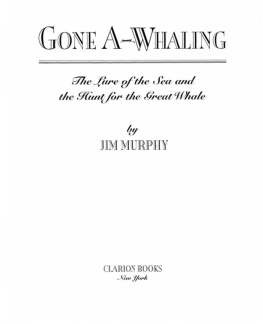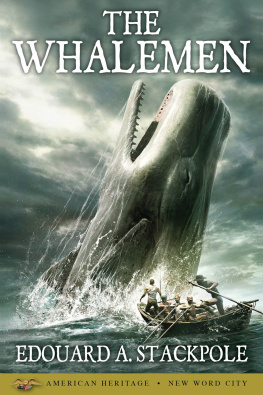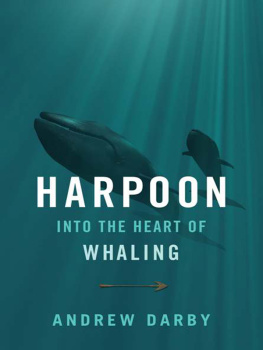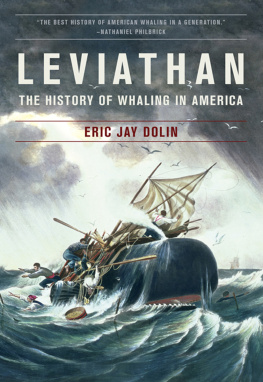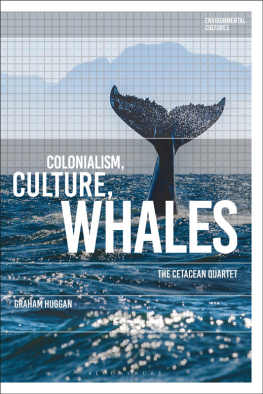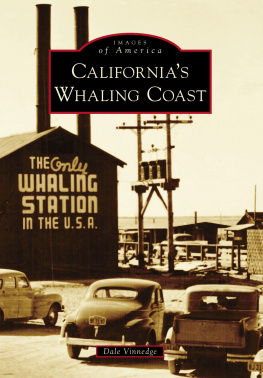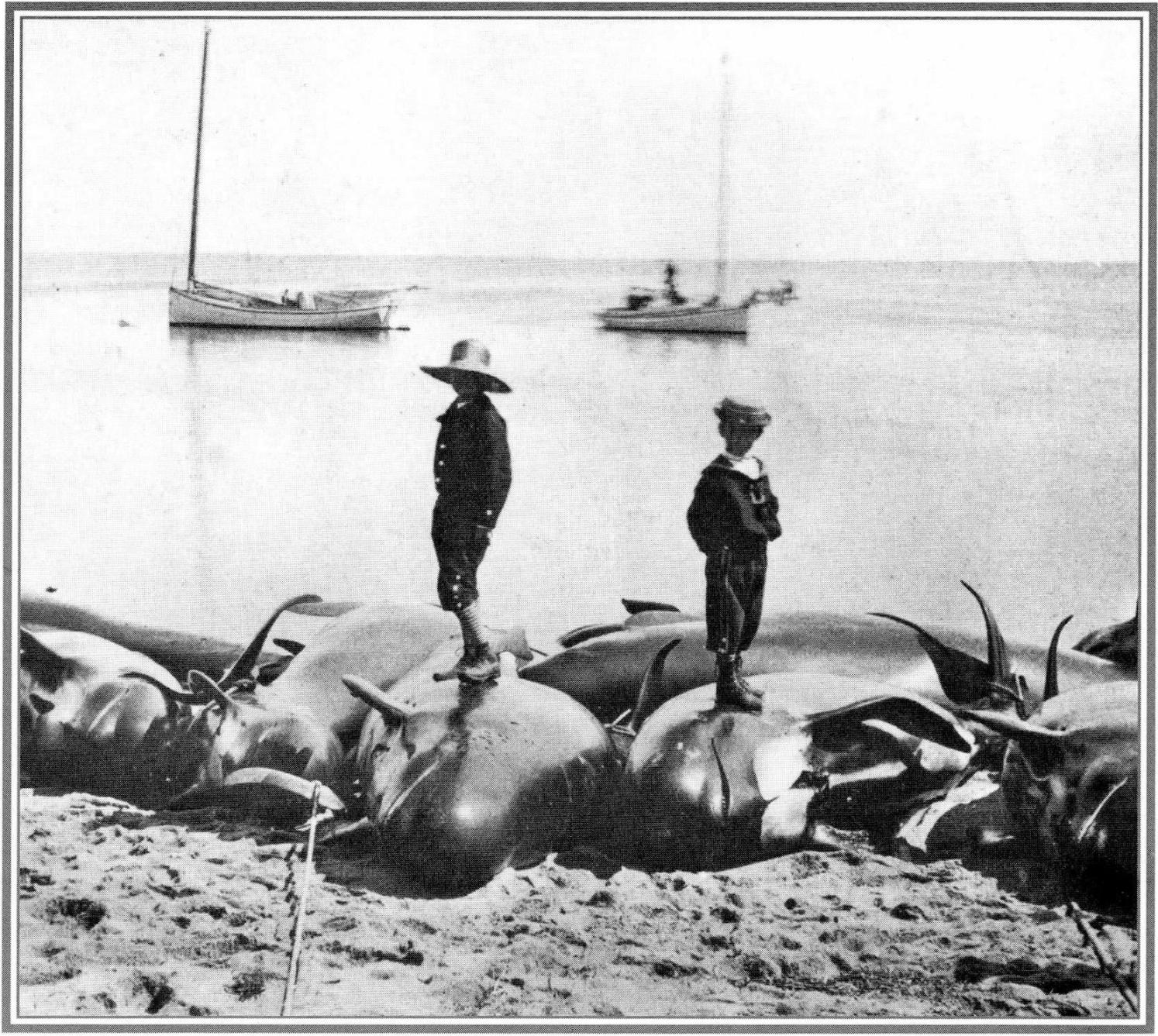
CLARION BOOKS
a Houghton Mifflin Company imprint
215 Park Avenue South, New York, NY 10003
Copyright 1998 by Jim Murphy
The text was set in 12-point New Baskerville.
Book design by Sylvia Frezzolini Severance.
All rights reserved.
For information about permission to reproduce selections from this book, write to Permissions, Houghton Mifflin Company, 215 Park Avenue South, New York, NY 10003.
www.houghtonmifflinbooks.com
Printed in the USA.
Library of Congress Cataloging-in-Publication Data
Murphy,Jim, 1947
Gone a-whaling : the lure of the sea and the hunt for the great whale /
by Jim Murphy,
p. cm.
Includes bibliographical references (p. 193) and index.
Summary: Surveys the history of the whaling industry from its earliest days to the present, focusing on the young boys who managed to sign on for whaling voyages. ISBN: 0-395-69847-2 PA ISBN: 0-618-43243-4 1. WhalingHistoryJuvenile literature.[1. WhalingHistory.] I. Title.
SH 383.M87 1998
306.364dc21 97-13051
VB 10 9 8 7 6 5 4 3 2
F RONTISPIECE: Dead whales were a common sight in whaling towns. Here two Nantucket youngsters play on the carcasses of some long-finned pilot whales in the late 1890s.
For Alison
my inspiration, my pal,
my at-home editor,
my research advisor
and helper,
my calm in the middle
of all storms,
and, most of all,
my one and only love
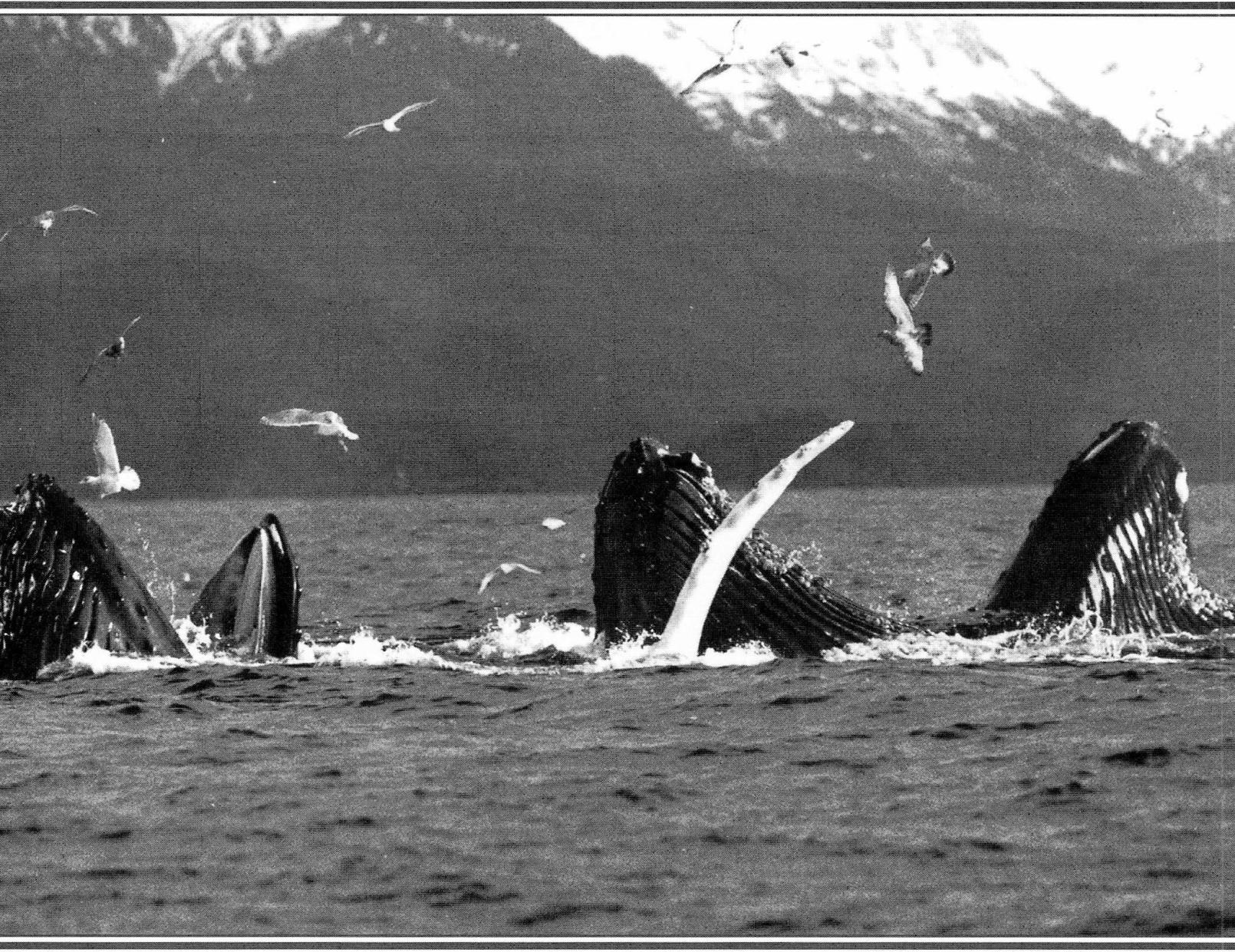 For millions of years whales swam the worlds oceans in peace. Here humpback whales have surfaced, mouths wide open to gather in food, while hungry birds circle, hoping for leftovers.
For millions of years whales swam the worlds oceans in peace. Here humpback whales have surfaced, mouths wide open to gather in food, while hungry birds circle, hoping for leftovers.CHAPTER ONE
Enticed by the Riches
In the year 1690 some persons were on a high hill observing the whales spouting and sporting with each other, when one observed; therepointing to the seais a green pasture where our childrens grand-children will go for bread.
Obed Macy,
History of Nantucket
T HE WATER IN THE BAY was calm. Mewing gulls soared and dipped feverishly, searching for fish, before gliding off toward the rocky shore. For a few seconds, all was quiet and serene.
Suddenly, the water erupted as a forty-ton right whale broke the surface, its tail flukes driving its massive body nearly clear of the water. A shower of spray flew from its flippers as the whale did a half turn, paused a second at the height of its jump, then came down, landing on its back with a thundrous, watery clap.
On the other side of the bay a second right whale seemed to answer with its own playful leap. Other whales surfaced, and soon the bay was filled with the huge black creatures. The immature whales and adult males cruised the deeper water spouting lazily, while close to shore, the pregnant females were about to give birth. The long journey from the summer feeding grounds had come to an end and a new generation of whales was about to appear.
Ever since whales in their present form began appearing about 30 million years ago, scenes like this one were common around the world. Whales of all kinds swam the oceans, mated and gave birth, fed and played. They were able to thrive in part because the seas were rich with food; another reason for their success was that they had few natural enemies. Its impossible to know precisely how many whales lived in the worlds seas thousands of years ago. Marine biologists estimate that there were as many as 4.5 million of the largest whales, plus millions more of the smaller whales, which includes their close relatives, the dolphins and porpoises.
This peaceful existence was disrupted by the arrival of humans. At first, humans were confined to watching the whales from the shoreawed and frightened by their size, and amazed by their grace and powerful leaping ability. Actual contact with the mighty creatures was limited to the instances when a dead whale washed ashore or when one accidentally beached itself.
Such encounters were rare, but Neolithic humans quickly discovered the incredible value of a whale carcass. A single large whale contained tons of meat, which could be dried to feed a village for months. Oil squeezed from the blubber created a very bright light when burned. The long bones, especially the ribs, were used for building homes and other structures, while the springy baleen (which is also referred to as bone) that came from the mouths of some whales was carved into combs, ornaments, and a variety of other useful items. Even the vertebrae made very nice basins and pots.
The hardships of day-to-day survival forced these people to be extremely careful and creative with each whale that came their way. The skins covering the livers [were] made into drum heads, whaling historian Ivan T. Sanderson speculates; the guts [were] shredded and used as twine for sewing skins.... Sinews from the tail flukes were doubtless used ... to bind stone and bone weapons and tools to shafts. In fact, whales must have been taken apart completely and every bit of them used.
Its not surprising that as human populations around the world increased, so did the demand for whale products. Why wait for the occasional whale to float up on shore? people reasoned. Why not go out and get one? So humans entered the whales domain intent on killing. Archaeological evidence, such as whale bones found in ancient garbage pits, suggests that wherever whales swam near the shoreline, boats went out to get them.
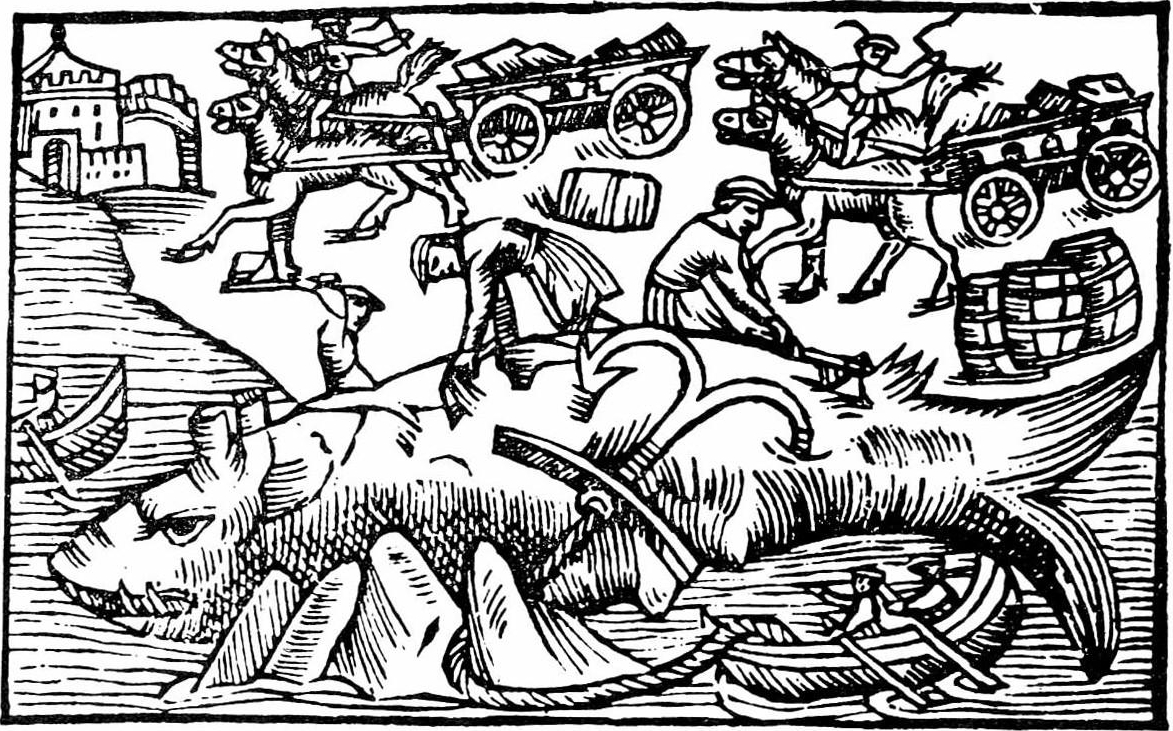 A twelfth-century drawing showing a beached whale being hacked apart for blubber, meat, and bones. Notice that the artist gave the whale long, sharp teeth and an angry, nasty disposition, both products of his imagination.
A twelfth-century drawing showing a beached whale being hacked apart for blubber, meat, and bones. Notice that the artist gave the whale long, sharp teeth and an angry, nasty disposition, both products of his imagination. A dead whale had many uses. In areas where wood was scarce, the long, curved bones from the rib cage could become the framework for a house or meeting hall.
A dead whale had many uses. In areas where wood was scarce, the long, curved bones from the rib cage could become the framework for a house or meeting hall.
Northern, Pacific, and Southern Right Whales
O THER COMMON NAMES: black right whale, right whale, true whale (all species); Biscayan right whale, Atlantic right whale (northern right only); ice baleen white (southern right only)
F AMILY: Balaenidae
S PECIES: Eubalaena glacialis (northern); Eubalaena australis (southern); Eubalaena japnica (Pacific)

The right whale was the first whale commercial hunters went after. It was the right whale to hunt because it was a slow, lumbering swimmer that stayed close to shore; it was placid and amiable, which made approaching it in a boat easy; it floated when dead; and it provided large quantities of valuable oil, meat, and baleen.
After killing off the right whales that frequented European waters, whalers followed their migratory trail from Europe to the Americas (both North and South), up to the Pacific northwest, and into the Sea of Japan. Cetologists have divided right whales into three separate species, the northern right whale (which lives in waters north of the equator in the Atlantic Ocean), southern right whale (which lives south of the equator), and the Pacific right whale. Aside from some minor cranial differences, the right whales look remarkably alike, having dark, rotund bodies with irregular white patches on the belly.

